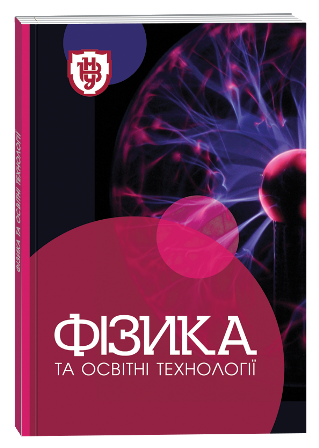MAIN PROBLEMS OF MODELING LASER-INDUCED BREAKDOWN OF MATTER
DOI:
https://doi.org/10.32782/pet-2022-1-13Keywords:
laser, optical breakdown, Relaxed Optics, cascade processes, shock processes, modelingAbstract
The main problems of modeling the laser-induced breakdown of matter are discussed. We show that this problem must be represented as resolution of famous Newtonian phrase: “Optics studies the processes associated with the transition of light into matter and matter into light.” Short analysis of main kinetic and dynamic processes is analyzed. Photoinduced and photochemical processes are represented kinetic phenomena. Thermal and plasma processes – dynamic phenomena. Unlike electrical breakdown, which can be superficial, laser-induced breakdown occurs in a medium that is transparent to the incident radiation. Therefore, we present the main differences between electrical and laser-induced breakdown. These processes are accompanied of phase transformations of irradiated matter. These processes have saturation nature. We show that these process have cascade nature. Therefore, basic problem of modeling is find the corresponding chain of interconnected phenomena, which are generated in the process of interaction the light and matter. Short analysis of corresponding models, which are used for the explanation of main peculiarities of electrical and laser-induced breakdown, are represented. These phenomena have threshold nature. Therefore, we selected experimental data of creation laser-induced optical breakdown for silicon carbide and potassium chloride. The proper cascade model was created. This model includes next stages: diffraction stratification (modifid model of Rayleygh rings); generation of Cherenkov radiation on each cone of corresponding diffraction ring (synthesized Golub and Niels and Aage Bohrs models); interference of short-wave part of Cherenkov radiation; optical breakdown in maximum of this interferograms. At the same time, the emergence of nanocavities in breakdown channels was explained on the basis of a modified Rayleigh model. It was also established that this shock process has electromagnetic nature.
References
Frӧhlich, H. H. (1946) On the theory of dielectric breakdown in solids. Proc. Roy. Soc. A, vol. 187, pp. 521–532.
Lehr, J., Ron, P. (2017) Electrical Breakdown in Solids, Liquid, and Vacuum. Ch. 9 in: Foundation of Pulse Power Technology. New York a. o.: Wiley-Interscience, pp. 439–497.
Okada T., Tomita T., Matsuo S., Hashimoto S., Ishida Y., Kiyama S., Takahashi T. (2009) Formation of periodic strain layers associated with nanovoids inside a silicon carbide single crystal induced by femtosecond laser irradiation. J. Appl. Phys., v. 106, p. 054307, 5 p.
Okada T., Tomita T., Matsuo S., Hashimoto S., Kashino R., Ito T. (2012) Formation of nanovoids in femtosecond laser irradiated single crystal silicon carbide. Material Science Forum, vol. 725, pp.19–22.
Shen, Y. R. (2003) The principles of Nonlinear Optics. New York a. o.: Wiley-Interscience, 563 p.
Trokhimchuck, P. P. (2020) Laser-induced optical breakdown of matter: retrospective and perspective./ Advances in Engineering Technology, vol. 4, part 7. New Dehly : AkiNik Publications, pp. 101–132.
Trokhimchuck, P.P. (2022) Diffraction: Concepts and Applications. In:Recent Review and Research in Physics. Ed. Jayminkumar Rajanikant Ray, S.S. Sharma, vol. 1, ch. 3. New Dehly : AkiNik Publications, pp. 37–67.
Wang H., Zeng Zh. (2012) Electric Breakdown Model for Super-Thin Polyester Foil, ch. 14, pp. 359-376. INTECH, doi: 10.5772/48478, Corpus ID: 34410888.
Yablonovich, E. (1971) Optical Dielectric Srength of AlkaliHalide Crystalls Obtained by Laserinduced Breakdown. Appl. Phys. Lett., vol.19, is.11, P. 495–497.








